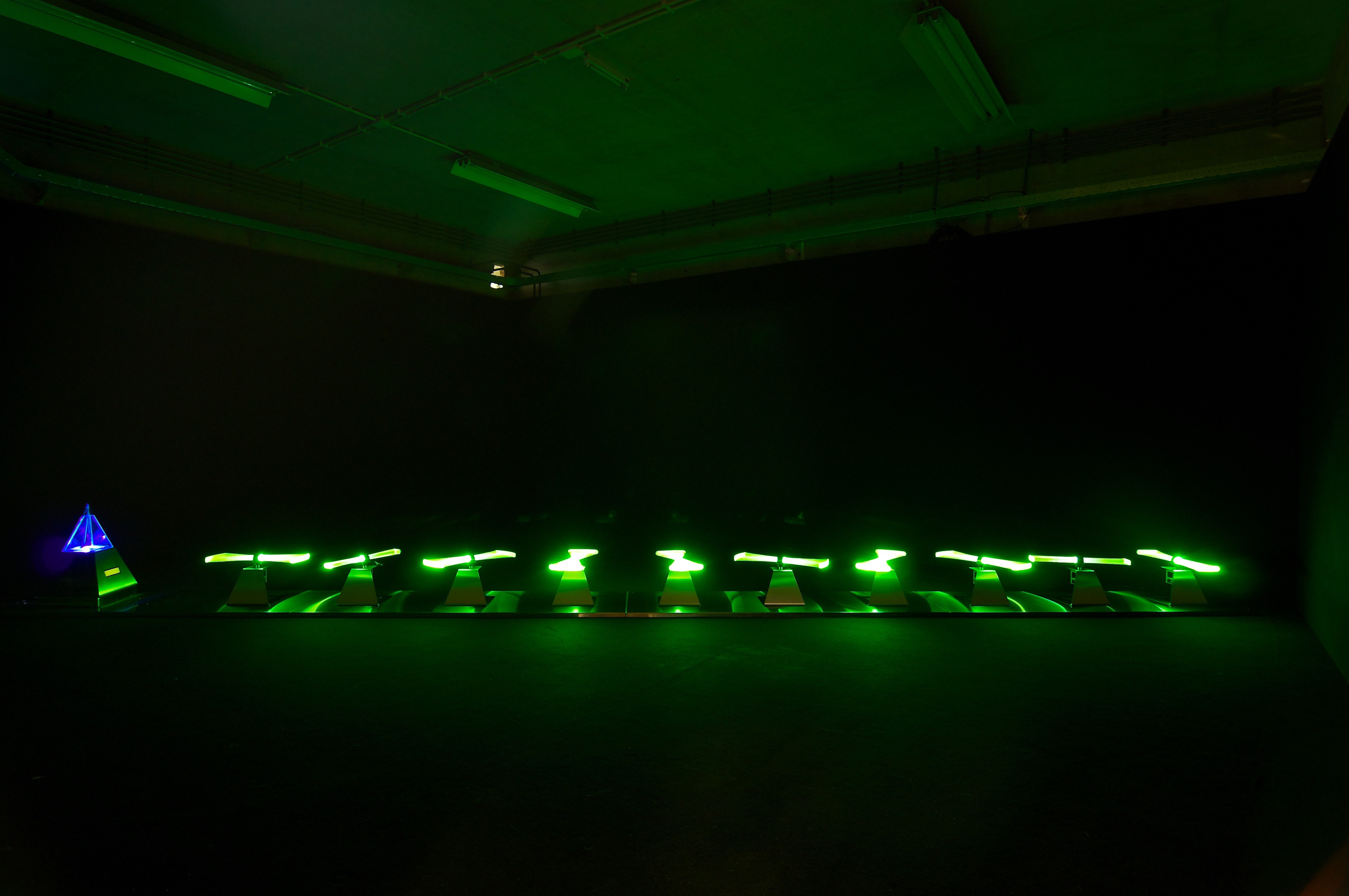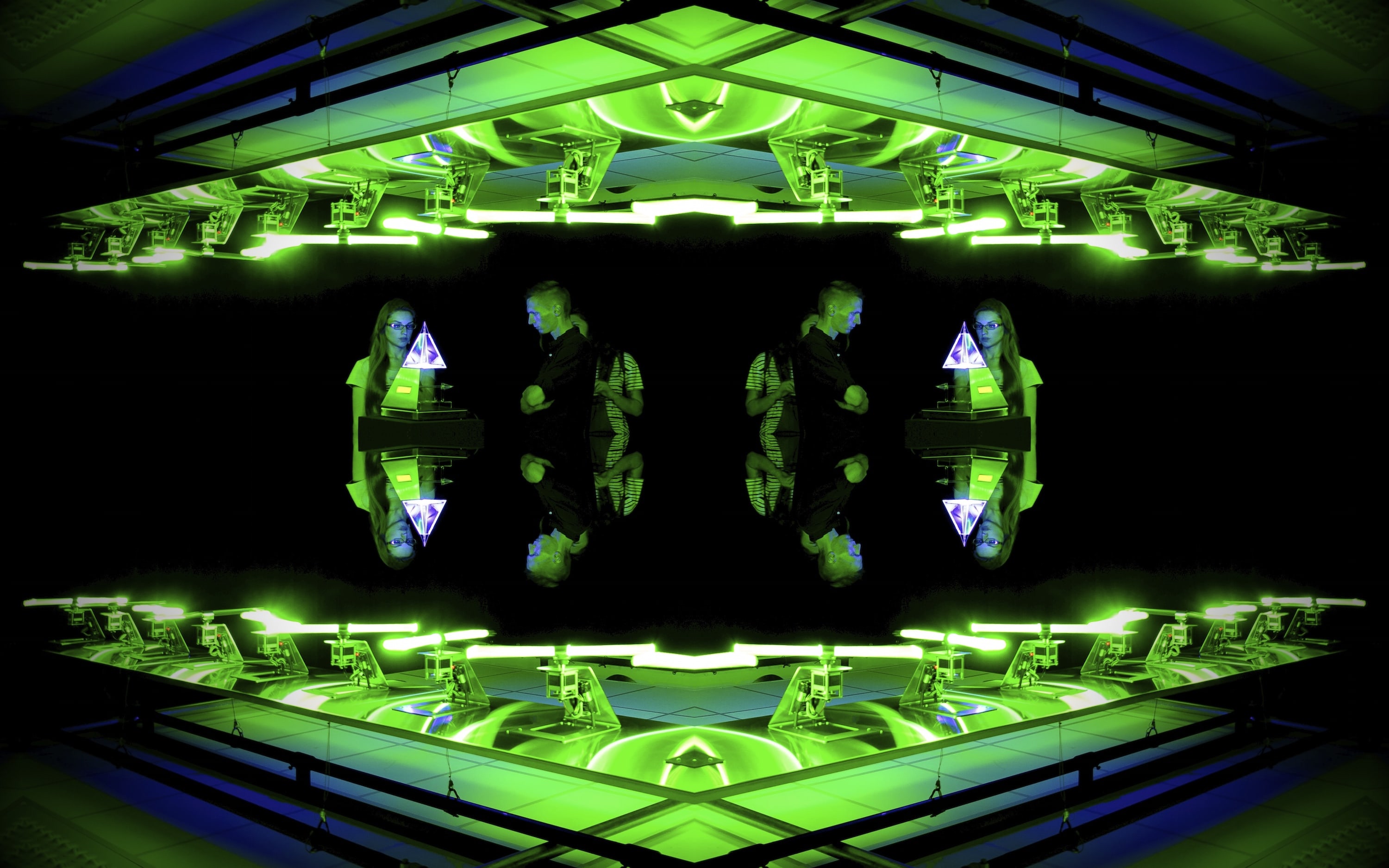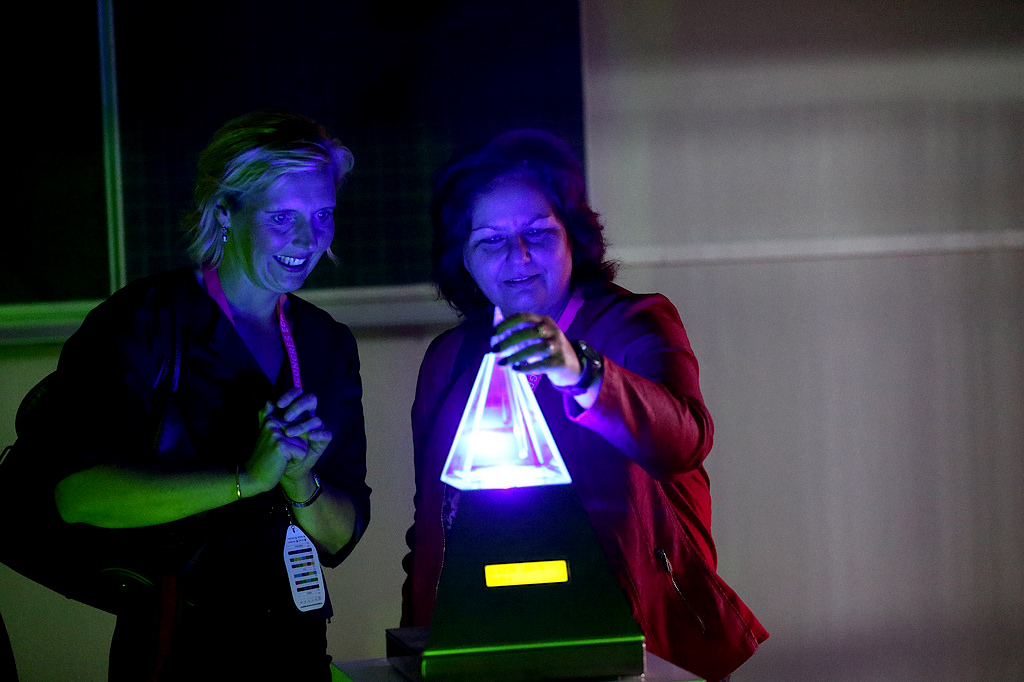Lead Angels #1.0 – 2014
[LA1.0] is an audio visual and kinetic installation exploring the weak nuclear force; an artistic interpretation of the concept of radiation, energy and true random numbers.
[LA1.0] is a techno-poetic meditation about controlling chaos.
Intro
Our world is changing rapidly. Monitoring our environment and bodies is key to understand our world and ourselves, create awareness and act on it. An inspiration was the invention of the world’s first seismoscope in the Han dynasty. The kinetic and audiovisual installation Lead Angels 1.0 draws attention to human intervention in the environment. The work could be seen as a realization of the Anthropocene.
What
The installation senses the environment by detecting radiation (e.g. Uraninite, cosmic radiation, Uranium salt), and transforms the measurements in a techno-poetic interactive experience of sound, light and movement.
Specific
Uranium glass -also known as Great Depression glass or Vaseline glass- has the particular property of emitting a bright acid lime green when lit with ultraviolet light. [LA1.0] incorporates hand drawn uranium glass rods placed on stepper motors that rotate and light up under controlled UV light flashes based on radioactive alpha particle decay measurements. Moreover, each measurement triggers steps, rotations, directions, different behaviors, UV-flashes and Geiger-clicks. Every kinetic element has a piezo speaker to make individual Geiger-clicks audible. A display shows the Geiger-counts -the half life of the uranium glass-, and by doing so visualizing its own half life or death.
Audience interaction
The audience can change the dynamics of the installation by inserting different radioactive samples.



